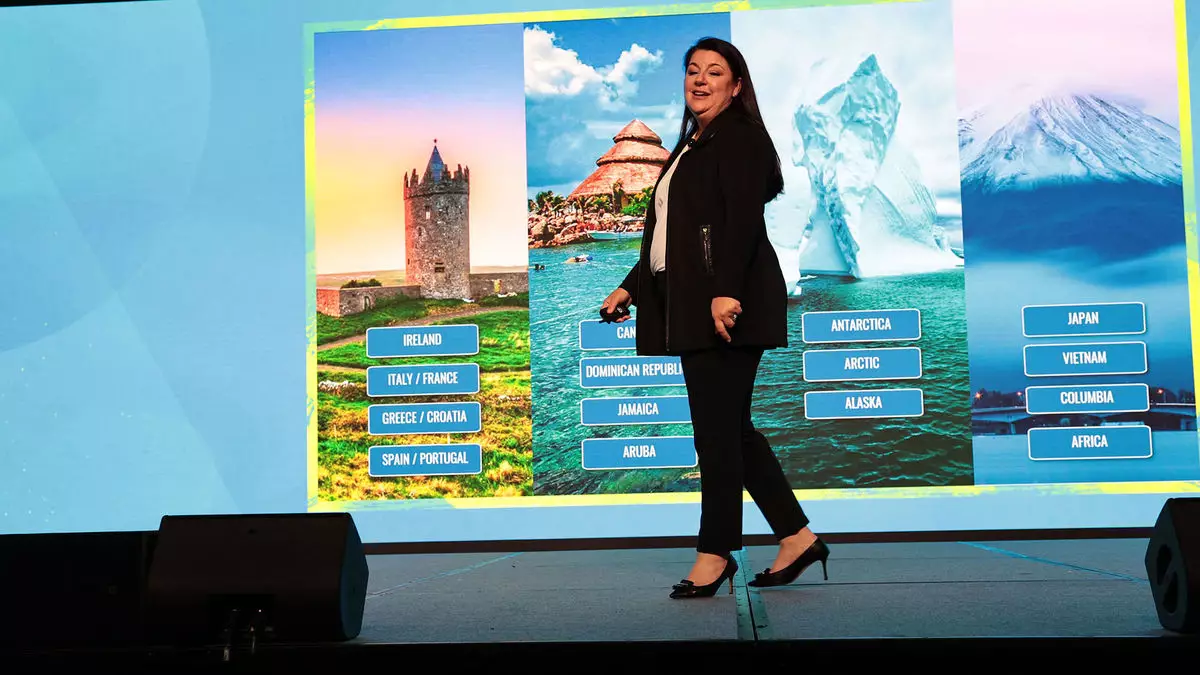The travel industry, notorious for its ebbs and flows, seems to have found its footing once again, particularly through the lens of the American Marketing Group (AMG). After a robust and eventful 2024, AMG’s brands, including Travelsavers and NEST, faced an unexpected slowdown in early 2025. However, CMO Nicole Mazza’s recent declaration of a quick recovery shines a light on resilience and adaptability within the sector. This observation isn’t merely forecasted optimism; it stands as a testament to the dynamic nature of travel and its continued allure to consumers.
Despite the brief hiccup in business momentum at the start of the year, Mazza’s assertion that “business is soaring” serves as an enthusiastic rallying cry for agencies and travel advisors navigating a turbulent market. With the addition of 47 new agencies generating staggering sales figures within the first five months of 2025, it becomes clear that the appetite for travel remains robust. The growth from a remarkable $279 million in preferred-supplier sales in 2024 to a projected $196 million for early 2025 portrays a market that isn’t just surviving; it is thriving.
Connecting Through Collaboration
Mazza’s advice for agencies with more cautionary perspectives highlights the importance of community in the travel industry. By connecting with successful peer networks, agencies can glean insights that may prove invaluable. In an industry so heavily influenced by personal experience and recommendation, maintaining a pulse on what is working for others could unlock new pathways for growth.
The essence of collaboration becomes even more critical as travel advisors grapple with evolving consumer demands. Guided tours, cruising, and various travel niches have their own unique sets of expectations and trends. With specific destinations popular for various types of travel experiences, advisors can capitalize on this knowledge, ensuring they provide tailored recommendations for their clients.
The Thrill of Diverse Travel Trends
A notable shift in traveler preferences illuminates the vast opportunities present. From guided tours in historically rich European nations like Italy and Greece to sun-soaked beaches in the Caribbean, discernible patterns emerge. These preferences align with advisement for travel agencies on how to meet the growing desire for unique and fulfilling travel experiences tailored for multigenerational families.
Moreover, niche trends like solo travel and ‘set-jetting’ are reshaping how the industry approaches marketing and product offerings. The staggering 300% increase in solo travel searches indicates a new voyage of personal discovery, with solo explorers seeking security and community while embracing solitude. This demand has prompted suppliers to innovate and cater to such travelers, demonstrating the industry’s agility in meeting new consumer needs.
Additionally, the rise of ‘set-jetting’ ties travel aspirations intimately to popular culture. Venues and locations showcased in hit television shows or films become pilgrimage sites for fans. As MGM’s Mazza illustrates, suppliers are beginning to adjust offerings accordingly, allowing fans to experience the magic of their favorite narratives in real-life settings.
The Counteractive Wave of FOMO vs. JOMO
In an age dominated by social media’s constant connectivity lies the intriguing dialectic of FOMO (‘fear of missing out’) and JOMO (‘joy of missing out’). While FOMO continues to drive many travelers to relentlessly seek out the next exciting adventure, JOMO encapsulates a more introspective desire to disconnect and relish in the tranquility of travel. The rise of JOMO suggests a crucial evolution within consumer travel preferences, emphasizing relaxation over the incessant pressure to document every moment.
This duality necessitates a nuanced approach for travel advisors aiming to cater to a diverse clientele. Advocating for JOMO can manifest in promoting serene getaways that prioritize self-care and mindfulness, allowing travelers to unplug from their digital lives and deeply connect with their surroundings. The appeal lies in the unique, contemplative experiences offered, challenging conventional travel narratives.
The current climate within the travel industry reflects a transformative phase, marked by resilience, adaptability, and a heightened sense of community. As the year progresses, the ability to harness these shifts—whether through collaboration, tailored offerings, or innovative products aimed at new traveler motivations—will delineate the winners in the evolving landscape of travel. Embracing these insights offers an optimistic outlook as agencies gear up to meet the anticipatory demands of travelers eager to embrace life beyond their doorsteps once again.


Leave a Reply